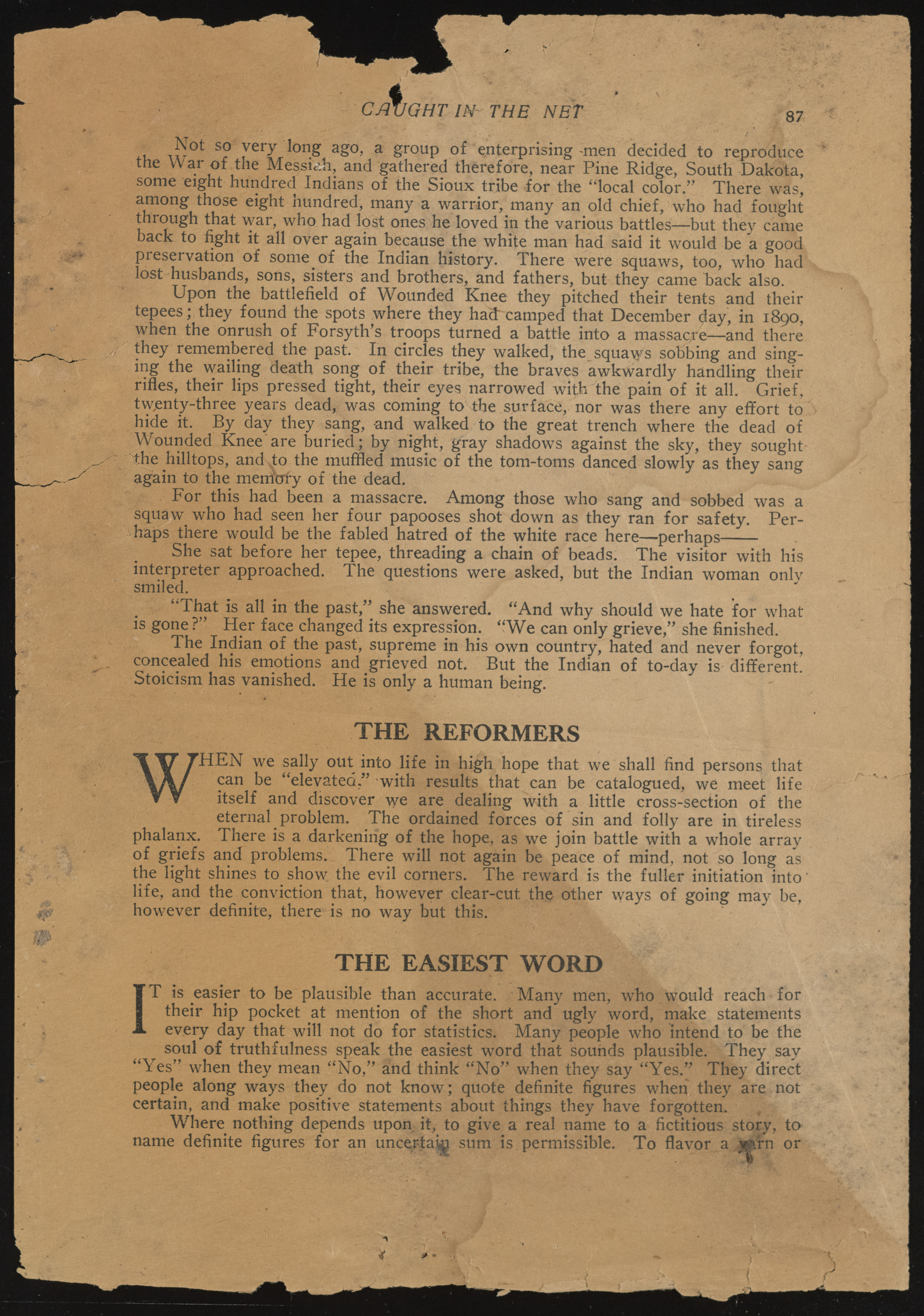Copyright & Fair-use Agreement
UNLV Special Collections provides copies of materials to facilitate private study, scholarship, or research. Material not in the public domain may be used according to fair use of copyrighted materials as defined by copyright law. Please cite us.
Please note that UNLV may not own the copyright to these materials and cannot provide permission to publish or distribute materials when UNLV is not the copyright holder. The user is solely responsible for determining the copyright status of materials and obtaining permission to use material from the copyright holder and for determining whether any permissions relating to any other rights are necessary for the intended use, and for obtaining all required permissions beyond that allowed by fair use.
Read more about our reproduction and use policy.
I agree.Information
Digital ID
Permalink
Details
Member of
More Info
Rights
Digital Provenance
Publisher
Transcription
I CmiQHT IN- 77f£ /V fiT 87 , s? yery l°n& ag°> a group of enterprising -men decided to reproduce the W ar o f the Messiah, and gathered therefore, near Pine Ridge, South Dakota, some eight hundred Indians of the Sioux tribe fo r the “ local color." There was, among those eight nundred, many a w arrior, many an old chief, who had fought through that war, who had lost ones he loved in the various battles— but they came back to fight it all over again because the white man had said it would be a good preservation o f some of the Indian history. There were squaws, too, who had lost husbands, sons, sisters and brothers, and fathers, but they came back also. Upon the battlefield of Wounded Knee they pitched their tents and their tepees; they found the spots where they hadr camped that December day, in 18 9 0 , when the onrush of Forsyth's troops turned a battle into a massacye— and there they remembered the past. In circles they walked, the squads sobbing and sing-ing the wailing death song o f their tribe, the braves awkwardly handling their rifles, their lips pressed tight, their eyes narrowed w ith the pain of it all. G rief, tw,enty-three years dead, was coming to the surface, nor was there any effort to hide it. By day they sang, and walked to the great trench where the dead of Wounded Knee are buried; by night, gray shadows against the sky, they sought the hilltops, and to the muffled music of the tom-toms danced slowly as they sang again to the memtrty of the dead. For this had been a massacre. Among those who sang and sobbed was a squaw who had seen her four papooses shot down as they ran fo r safety. Perhaps there would be the fabled hatred o f the white race here— perhaps------ She sat before her tepee, threading a chain o f beads. The visitor w ith his interpreter approached. The questions were asked, but the Indian woman onlv smiled. • That is all in the past," she answered. “ And why should we hate fo r what is gone ?" H er face changed its expression. “ W e can only grieve," she finished. The Indian of the past, supreme in his own country, hated and never forgot, concealed his emotions and grieved not. But the Indian of to-day is different. Stoicism has vanished. He is only a human being. m THE REFORMERS rH E N we sally out into life in high hope that we shall find persons that can be “ elevated " w ith results that can be catalogued, we meet life itself and discover we are dealing w ith a little cross-section of the eternal problem. The ordained forces o f sin and fo lly are in tireless phalanx. There is a darkening of the hope, as we join battle w ith a whole array of griefs and problems. There w ill not again be peace of mind, not so long as the light shines to show the evil corners. The reward is the fu lle r initiation into life, and the conviction that, however clear-cut the other ways of going may be, however definite, there is no way but this. THE EASIEST WORD T is easier to be plausible than accurate. Many men, who would reach for their hip pocket at mention of the short and ugly word, make statements every day that w ill not do fo r statistics. Many people who intend to be the soul o f truthfulness speak the easiest word that sounds plausible. They say “ Yes" when they mean “ N o," and think “ N o" when they say “ Yes." They direct people along ways they do not know ; quote definite figures when they are not certain, and make positive statements about things they have forgotten. Where nothing depends upom it, to give a real name to a fictitious story, to name definite figures fo r an uncqrtajg sum is permissible. To flavor a $|pn or \

